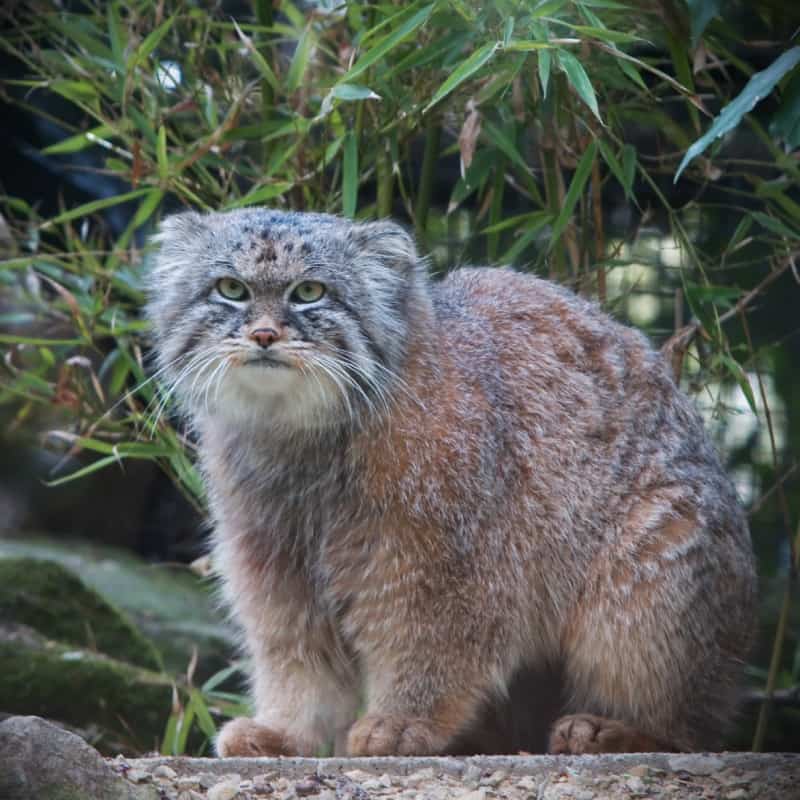Pallas Cat Facts
- The Pallas Cat remains a small species of wildcat. It appears endemic to the montane steppes and grasslands of Central Asia.
- Its distribution throughout the greater extent of this range seems to be highly fragmented, however.
- Interestingly, the Pallas Cat also lives as a predominantly solitary animal. Like most species of wildcat, it uses scent to mark its territory.
- Unfortunately, its numbers seem to be declining rapidly. Consequently, IUCN classifies it as Near Threatened.
- People still hunt it for its fur in Mongolia, Russia, and China. It occasionally gets caught in traps set for other animals, such as marmots. Domestic dogs also pose a common threat.
Related Articles
Pallas Cat Physical Description
Firstly, the Pallas Cat measures about the same size as the average domesticated feline. It also appears to be much bulkier due to its extremely long, dense fur.
In fact, the species averages a body length of as much as 26 in (65 cm) and the tail averages 12 in (31 cm) in length.
Weights also vary greatly between individuals but reach as much as 10 lb (4.5 kg). The legs grow comparatively short, adding to its rather stocky appearance.
Further, the fur typically shows an ocher color in summer, and grayish in the winter. The ears are set very low, and wide apart, and the claws are extremely short for a feline.
- Kingdom: Animalia
- Phylum: Chordata
- Class: Mammalia
- Order: Carnivora
- Family: Felidae
- Genus: Otocolobus
- Species: O. manul
Pallas Cat Distribution, Habitat, and Ecology
The Pallas Cat lives in portions of the Tibetan Plateau. There, it inhabits territories of Tajikistan, Mongolia, Pakistan, Kashmir, and much of western China and dwells as high as 16,570 ft (5,050 m).
The species primarily preys upon wild gerbils, voles, pikas, and partridges. It also has a diurnal nature and spends the majority of the day in rock crevices, caves, or marmot burrows.
Individuals also typically hunt late in the afternoon and are not fast runners, so principally hunt as ambush predators.
The Pallas Cat also has an average lifespan of roughly 11 years.
Species Sharing Its Range
Check out our other articles on 4 Remarkable Louisiana Reptiles, Australian Sea Lion, Lake Maracaibo, Western Juneberry, East African Lowland Honey Bee, Weedy Seadragon, Green Iguana

